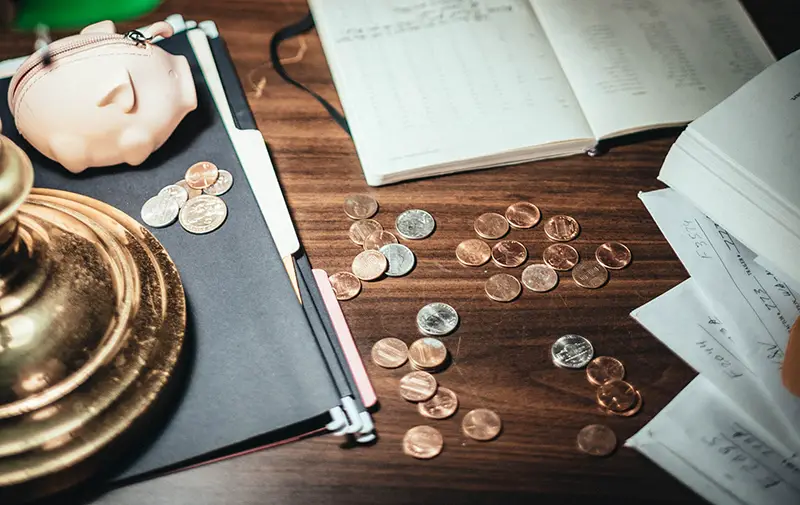Click here to get this post in PDF
Third party debt orders are a last line of attack for creditors looking recoup their debts from a debtor. Discover more here…
If you’re looking to get your money back from a debtor who’s refusing to pay you, applying for a third party debt order could be your only recourse. But what exactly is this, and how can you go about getting one?
In this post, we’re going to discuss what third party debt orders are, how you can raise one, how long it takes, and the ways in which the debtor can curtail the order. Basically, we’ll tell you everything you need to know about third party debt orders. Take a look…
What is a Third-Party Debt Order?
Third party debt orders allow creditors who have a County Court Judgement (CCJ) against a debtor to freeze and take money directly from their bank, building society, or business account to repay their debt.
CCJs are court actions made against debtors where the court has decided that a debtor owes a creditor money. Unfortunately, obtaining a CCJ doesn’t mean the debtor will pay you back as they can effectively bury their head in the sand and ignore the judgement.
This is where third party debt orders come in. Freezing a debtor’s account makes them stand up and take notice, because they won’t be able to spend money on anything until they pay you back.
They’re also quite sneaky, as far as court orders go, because you can make them without notifying the debtor. This gives the whole process an element of surprise, with the debtor waking up one day and not having access to their bank account.
You can also use third party debt orders to recover money from someone who owes your debtor money. In these cases, the person who owes the debtor is stopping them from paying you back, so you can actually make the person who owes the debtor pay you instead.
How Do You Apply for a Third Party Debt Order?
So, now we know what third-party debt orders are and what they’re used for, it’s time to look at how you can obtain one.
As the creditor, you need to understand what the financial circumstances are of the person who owes you debt. One way to do this is to apply for an order to obtain information which forces the debtor to go to court and answer questions about their finances.
If the debtor doesn’t turn up to this order, they can be sent to prison. The only issue with this tactic is that it ruins the surprise element we mentioned in the last section, as the debtor will be fully aware that you’re planning to take enforcement action.
Once you know what your debtors’ finances are, you have to complete the required court application forms and supply evidence, including:
- Details of the judgment debt
- Details of any other creditors
- A Statement of Truth
- Details of the third party, i.e., the debtor’s bank or building society
There are extensive rules the creditor has to follow in order to have their application approved, in which case the court might decide to make an interim third party debt order. At this stage the debtor can either be informed or not about the interim order.
If they’re informed, they can dispute the processing of a final third party debt order which is when their accounts are frozen. Also, when you freeze their account, they are able to lean on ‘suffering of hardship’ to unfreeze their accounts if important payments need to be made.
With this being such a delicate process, and not just a form you fill in and send away, it’s best to engage a solicitor to do the work for you. This way, you won’t end up wasting time and money on a failed third party debt order.
How Long Does it Take a Third Party Debt Order to Go Through?
Before we discuss the ways in which debtors can free themselves from a third party debt order, we’re going to briefly go over the time it takes to process one.
The time it takes to process this type of order – from your initial application to the final order – varies depending on the circumstances of the case. However, there are some set deadlines within the process.
The interim order can be made quite quickly after the initial application and doesn’t need a court hearing (unless you submit an order to obtain information). The final order should then be made within 28 days after the interim.
Therefore, the whole process can take a minimum of a few months, but between the interim and the final order, the debtor can file objections and fight back against it.
How Can a Debtor Challenge a Third Party Debt Order?
As we mentioned at the end of the last section, a debtor can challenge a third party debt order between the interim and final order. This can make it difficult to settle everything within the given 28 day period.
If the debtor can show good reasons that the order shouldn’t be made final, they can stop it from being made. These reasons could be:
- Their money is in a joint account and the other accountholder does not owe the debt.
- The debt is small and the third party debt order is too serious for such an insignificant amount of money.
- The order will cause undue hardship to the debtor and their family.
- Their account is overdrawn.
- The money in their account belongs to someone else.
- Their money is in a credit union or building society account, and they’d be left with less than £1 if they were to pay the debt.
If the debtor can’t successfully make one of these arguments, and the third party debt order is finalised, they can still apply for a ‘hardship payment order’. This may be taken up if they can prove the freezing of their account would stop them from paying day-to-day living expenses.
All of these things withstanding, your debtors accounts will be frozen until they pay you the money they owe.
Think You Need to Raise a Third Party Debt Order?
In this post, we’ve covered what third party debt orders are, how you obtain one, how long they take to go through, and how a debtor can challenge the order.
This should be enough information for you to make one of these orders. That said, if you’re serious about making sure it goes through, you should engage a professional solicitor to help you through the process.
You may also like: 3 Reasons to Hire a Debt Collector
Image source: Pexels.com



